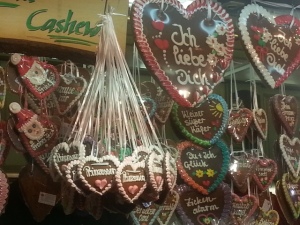Updated March 2016 – For more information on GcMAF, please join the GcMAF and GcMAF Cancer forums on Facebook – they are closed groups, so you have to wait for your membership to be confirmed. They contain up-to-date information on sources of GcMAF, and also feedback and contributions by people who are using GcMAF.
Updated 28 Dec 2013
Here are the highlights of the integrative cancer conference I attended on 30 November and 1 December, 2013, in Fulda, Germany. I will be writing individual posts on each topic.
First a huge-thank you to Dr Heinz Reinwald for letting me and Peter Trayhurn attend this conference, and also for giving us his time and consideration, and a discount on the conference fees.
(I’m not sure what the practitioners made of having two patients in their midst, but we were very discrete and were there on a fact-finding mission to find out what was the latest in integrative approaches to cancer, and to suss out which were the doctors who were doing leading-edge research.)
I was impressed by the organisation of the conference. The conference hotel was luxurious, the room was comfortable, and there were German-English translators as the majority of the talks was in German. The food at mealtimes was fantastic, four-star buffets with plenty of ketogenic diet options. Everyone was friendly, which was very important for me. The quality of the speakers was excellent, world-class, and if I had the money I would go again next year. It was a bit of a steep learning curve for me at times – if you are a patient and interested in next year’s conference, I suggest that you bone up on the causes of cancer. If you have a degree in biochemistry that would be helpful as some of the lectures are fairly technical!
Now that I’ve been going through my notes, my overall impression is that the conference was a good mix of providing new information on approaches to cancer treatments, as well as showcasing the products of the sponsor, Dr Reinwald, in particular, Master Amino Acid Pattern (MAP) without being too much of a hard-sell.
Getting information that is not available on websites is not easy where cancer treatments are concerned – so much depends on where you are looking, and a lot of research is still not readily available. So to be in the midst of practitioners who are sharing their knowledge, backed up by hard-core research and trials, was immensely valuable – thank you, Dr Reinwald! And to be able to get together world-class practitioners speaks volumes for Dr Reinwald’s reputation and organisation and products.
Conference for Integrative Medicine in Fulda

The Christmas market at Fulda
Continue reading →







